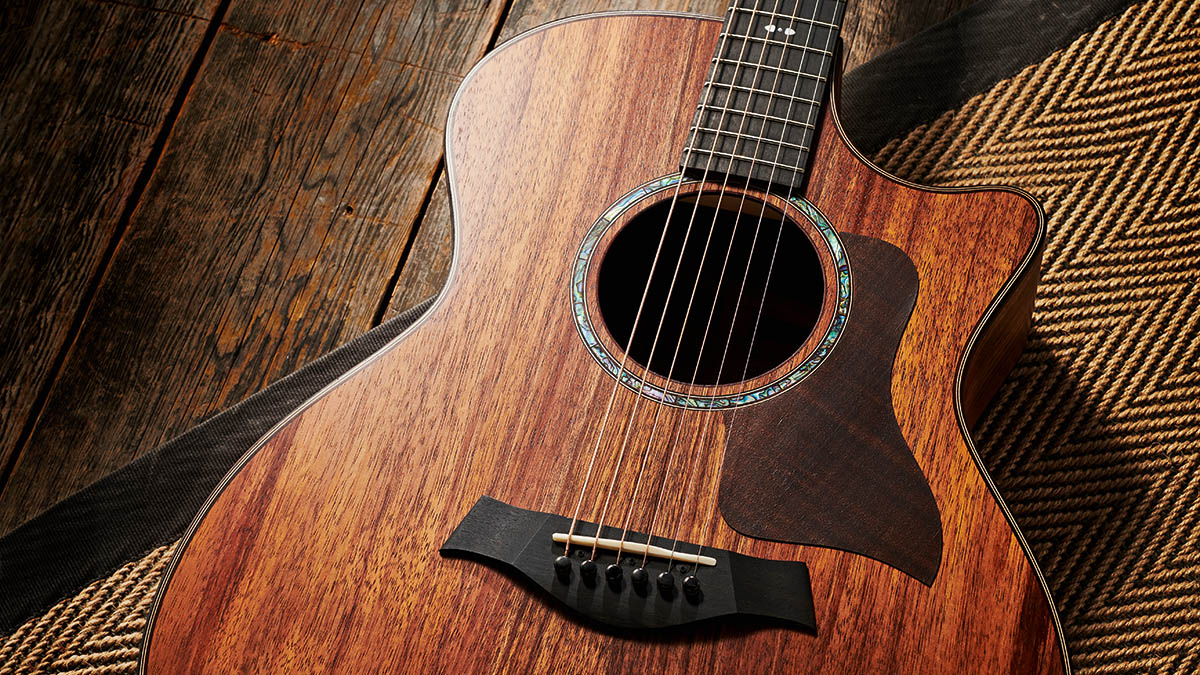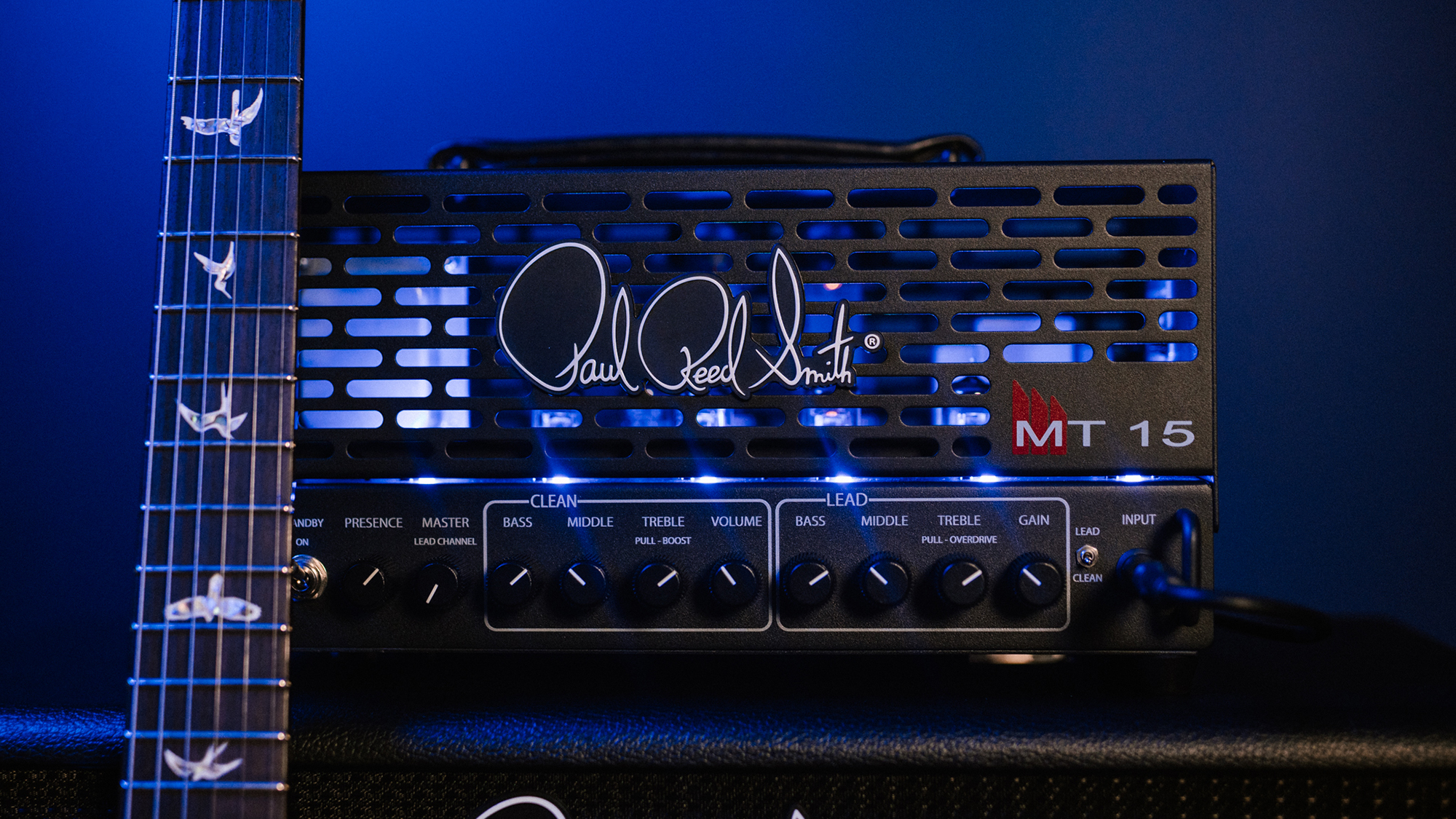Guitar World Verdict
A stunning-looking and sounding acoustic with a characterful tone that sets it apart from from the competition.
Pros
- +
Virtually unmatched build, fit and finish.
- +
Fantastic playability.
- +
Organic and rewarding tones.
Cons
- -
Slightly pricey, but the model streets for less.
You can trust Guitar World
The guitar industry has a lot to thank Taylor for. Since Bob and his partner Kurt Listug founded the company in 1974 it has strived to bring superlative build quality to an industry that was sitting on its laurels and, it could be said, living off past glories.
The following decade saw PRS do exactly the same thing to the electric guitar world, and subsequently the quality of almost any instrument you pick up today is not only superb but owes at least something to these two innovators.
Of course, this was due in no small part to the introduction of modern technology such as CAD design, computer-controlled machinery and laser-cutting technology, all of which figure in the instrument we have here for review.
The 700 Series is one of Taylor’s most important since it’s based in the big-selling upper midrange of the company’s output. It incorporates a range of body sizes and styles, and until recently used the tried-and-trusted rosewood and spruce construction formula.
However, the company has just revamped the range with the introduction of two handsome new guitars, the 722ce Grand Concert and our magnificent-looking 724ce Grand Auditorium, both in Hawaiian koa wood.
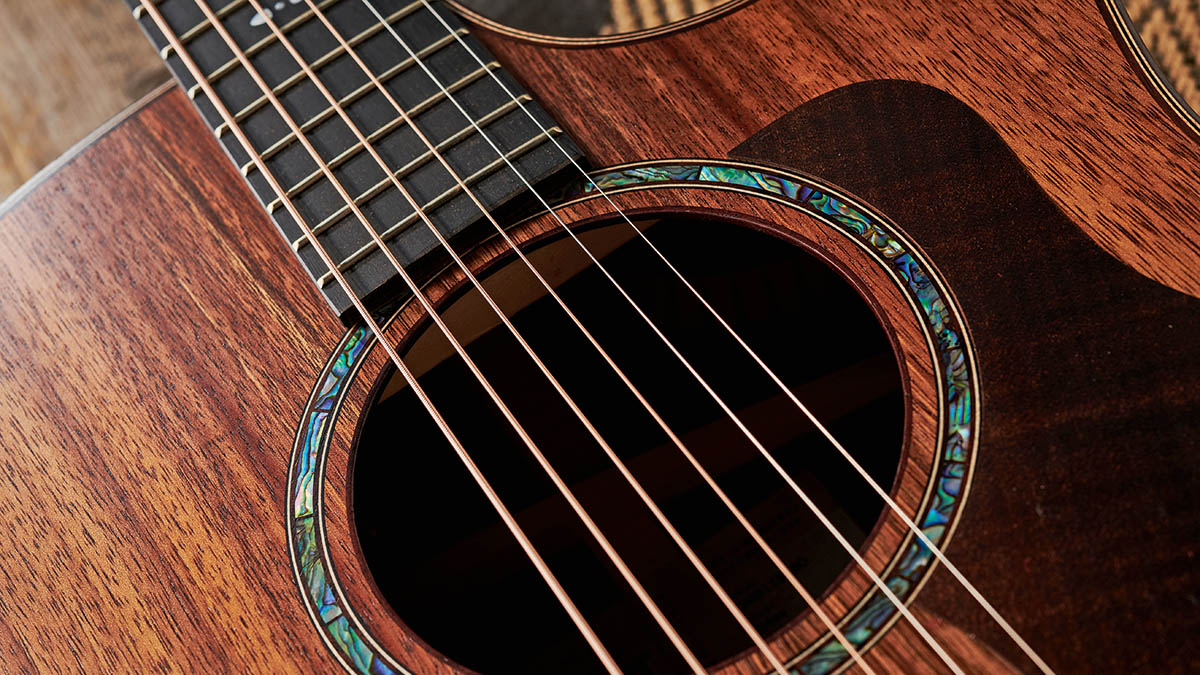
Since master designer Andy Powers’ arrival at the company (and his subsequent rise to the top), many small but shape-shifting changes have been made to Taylor’s instruments – mainly inside, but here visually, too.
Taylor has worked closely with its timber-sourcing company in Hawaii, not only to initiate a koa sustainability programme, but also to use parts of the tree that don’t contain the highly flamed grain used on the company’s Koa Series, but which are nonetheless attractive in their own right.
In fact, should you purchase one online, make sure the guitar you order is the one you actually receive, as each one can look radically different from the next.
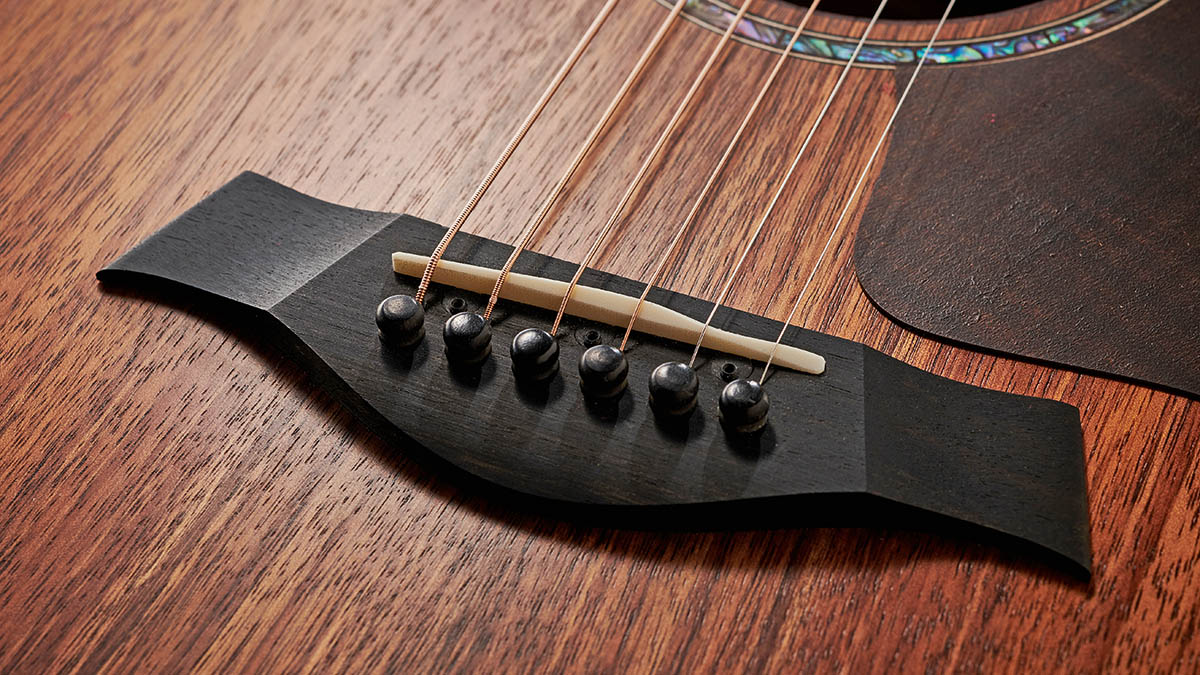
Hewn from solid ‘select koa’ as Taylor calls this grade, the 724ce (cutaway electric) also features a mahogany neck, ebony fingerboard and headstock overlay, Indian rosewood binding around the body and soundhole, plus a dark-stained maple pickguard.
The soundhole purfling ring is of genuine paua shell, while the fingerboard ‘fountain’ and peghead inlays are real mother-of-pearl. It’s a bonanza of natural materials that hangs together superbly well.
Powers says the V bracing stiffens the guitar body along its length, allowing the strings to vibrate for longer, thus increasing sustain while not impairing volume
There’s a lot going on inside the 724ce, too, and let’s start with the bracing. Andy Powers’ V-style pattern is intended to provide a range of benefits compared with the traditional X-style bracing that has been in use for a century or more.
The V shape extends from each side of the soundhole, converging at a point down by the end block, with a central cross bar and a couple of extra struts fanning out from each side. The reinforcing bridge plate and slightly angled struts on the guitar’s back complete the picture.
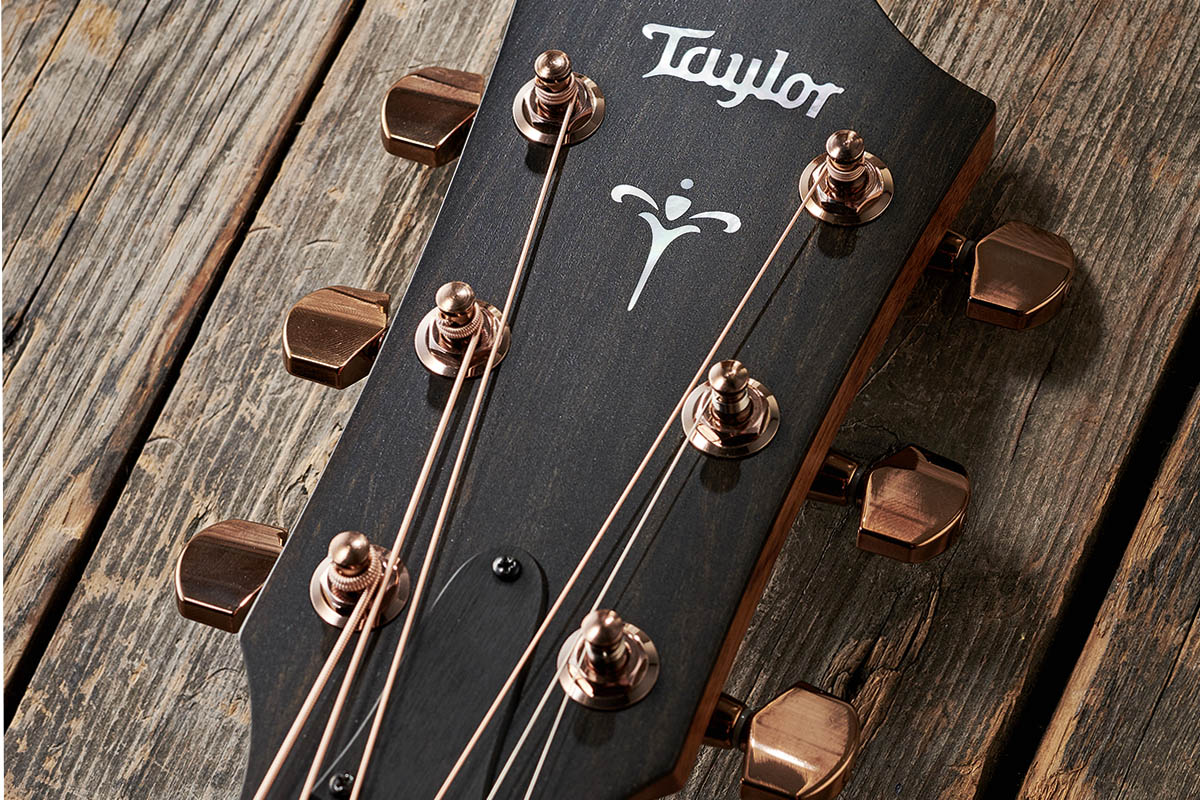
Powers says the V bracing stiffens the guitar body along its length, allowing the strings to vibrate for longer, thus increasing sustain while not impairing volume. This stiffness is also reported to largely eliminate extraneous vibrations or ‘interference’ that compromises the guitar’s apparent ‘in-tuneness’. It’s a complicated balancing act that every bracing pattern has to overcome, but the V system is said to suit the koa construction particularly well.
The 724ce is coated in an ultra-thin, open-pore matt finish that looks fantastic; it doesn’t reflect the light away from the almost glowing koa top, back and slides, and feels great to the touch, too.
Brushed bronze tuners, easy-change battery compartment, black Tusq nut and white Tusq bridge saddle with inlaid ebony pins, all add to an instrument that certainly looks the business. But does it cut the mustard in the other departments? Let’s see.
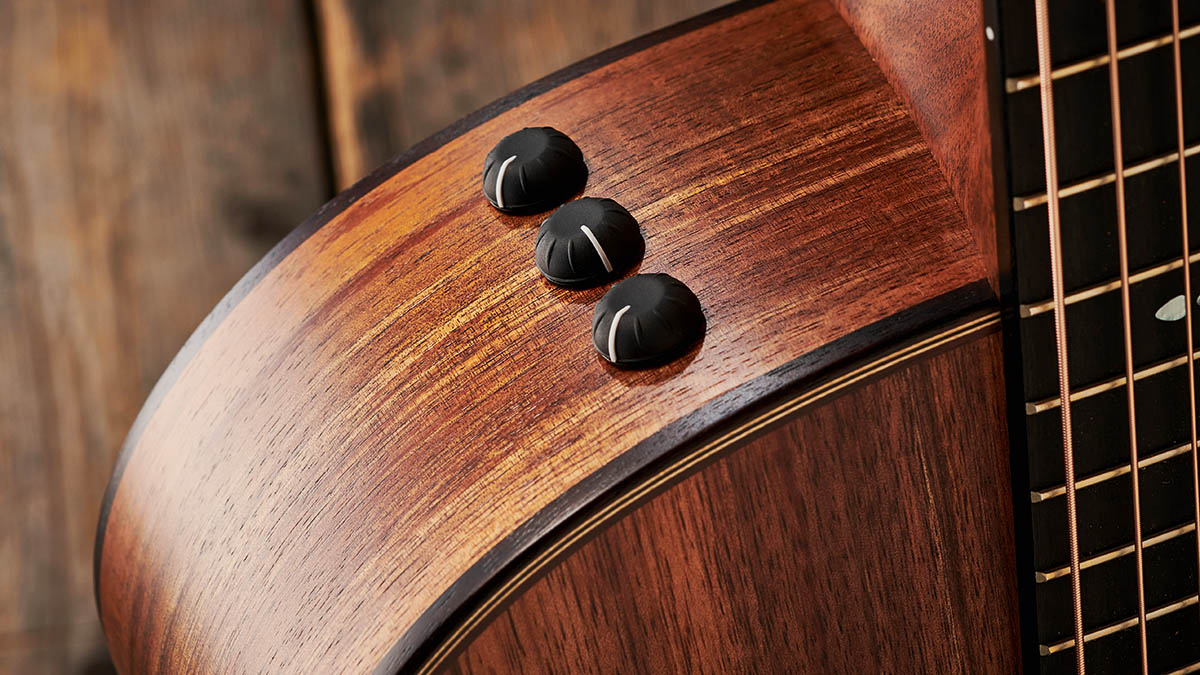
Feel & Sounds
One of Taylor’s great strengths has always been the ease with which its necks play. There’s something about their soft V-profile and easy action that makes for such a friendly playing experience. The action on our 724ce is low and slinky, and its 0.012-gauge Elixir strings feel tactile and unresisting under the fingertips.
The neck’s 44mm (1.74-inch) nut width is great for easy open chording and all those ‘twiddly bits’ we pickers love to throw in. Of course, with its attractive Venetian cutaway, top-end access – should you delve up the dusty end – is all but limitless.
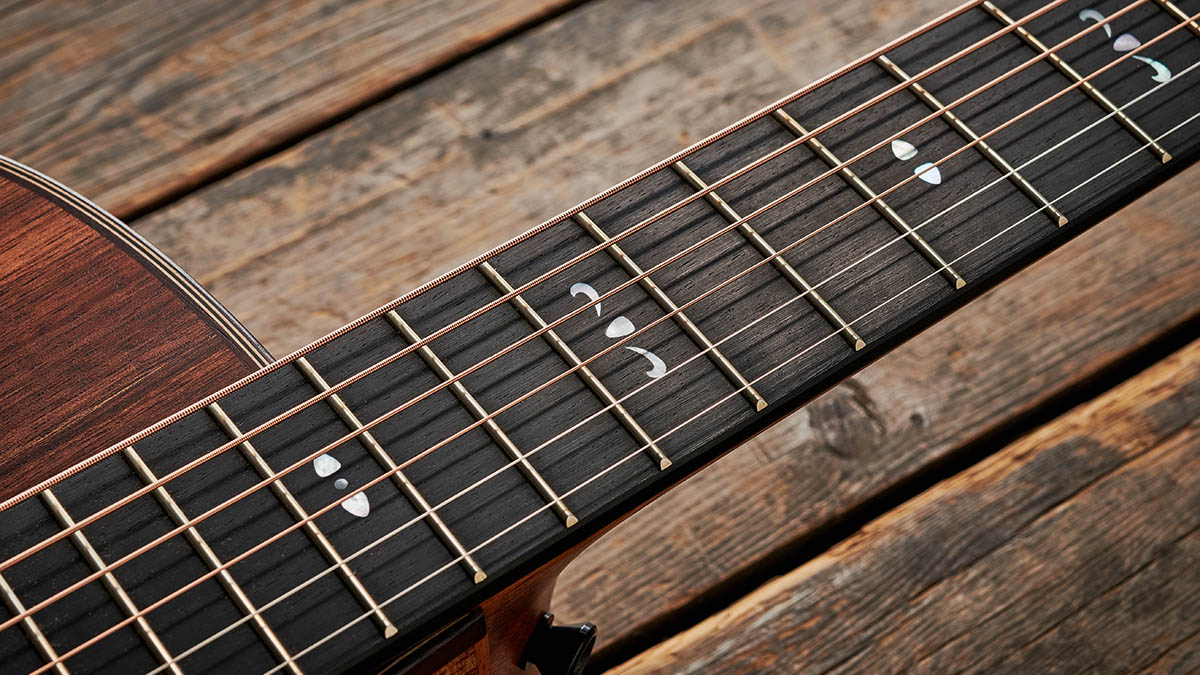
On a strap the guitar feels comfy. It’s not a small box by any means, but the Grand Auditorium’s body feels easier to throw around than, say, a dreadnought or jumbo. Of course, Taylor has always fitted a strap button on the heel’s underside (the bolted-on neck prohibits heel cap positioning), so the instruments are stage ready from the get-go.
Acoustically, our koa Taylor has a strident but warm and welcoming voice. There’s no thunderous bass evident, but more of a balanced lower-mid hum that ties in very musically with the musical upper-mids and sweet trebles that the guitar exhibits.
Fingerpicked tones are crisp and direct, while strumming with a medium pick elicits a wash of finely tuned chords that makes the perfect bed to any vocal performance, but wouldn’t be obtrusive in the context of other acoustic instruments. Not only that, it’s a superb sofa-noodler, too.
Compared with a Gibson dreadnought and a Martin OM that we have to hand, it’s a different voice entirely. Where the Martin sparkles and the Gibson bellows, the Taylor sits neatly in the middle, with a sound entirely its own (if anything, we detected a touch of the Lowden about it, and that’s no bad thing at all).
Although we were not able to plug the guitar into a PA or acoustic guitar amp, the Expression System 2 pickup and preamp has been around for a while and is a tried-and-trusted affair. And, like all things Taylor, it’s designed for ease of use. Three adjustable sensors sit on the top’s underside and behind the saddle (not beneath it in its slot).
This move was made to better reflect and transmit more of the instrument’s natural sound. With simple volume, treble and bass knobs mounted on the top bout next to the neck heel, it’s an intuitive system that you’ll probably set once and then forget. And what’s not to like about that?
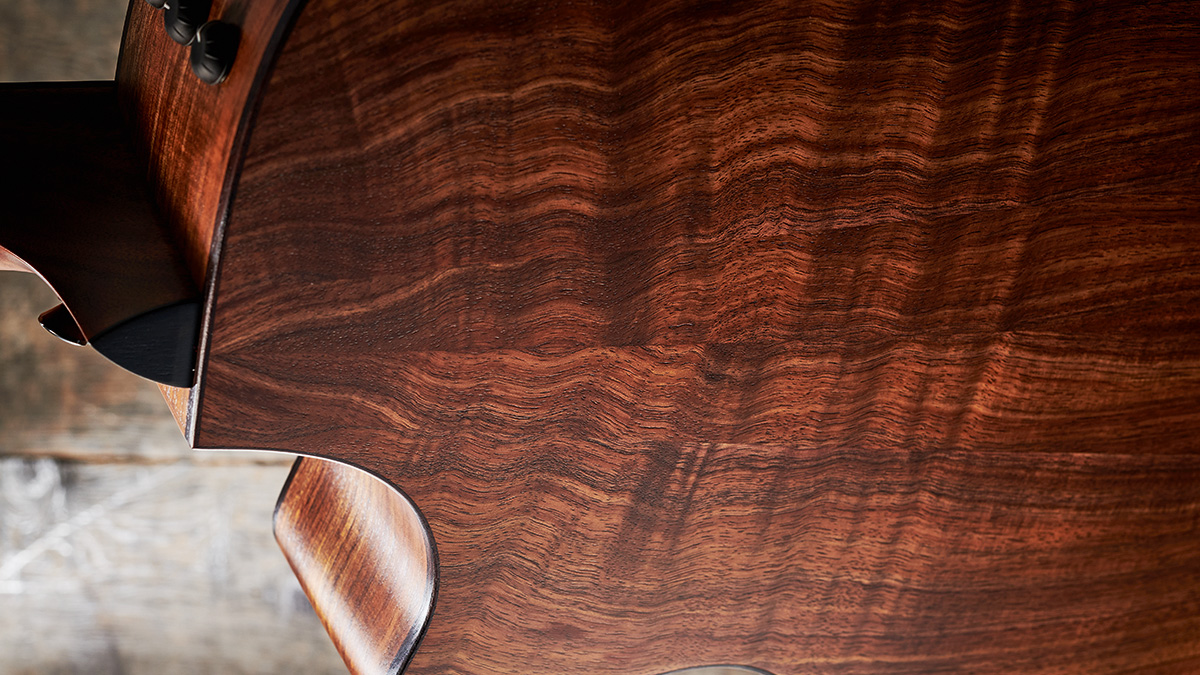
Verdict
Without explicitly saying as such, Andy Powers has gradually been trying to rid Taylor’s guitars of their ‘very nice but slightly bland’ sonic reputation. There’s never been any doubt about their integrity of construction – examine our 724ce with a magnifying glass and we’d challenge you to find a flaw – but ‘personality’ is not a word that you’d often hear directed towards the Taylor tone.
Well, that’s all changing. We’ve played a range of Taylor guitars recently and each new model has proved to be both an enjoyable and musically rewarding experience.
The move towards this beautiful and sustainable timber must be applauded. It’s a joy to behold
Taylor itself, its dealers and players alike, will be very excited about these new koa instruments. Koa’s tone is usually held to improve quickly with use, and if they start off sounding as good as this one, should blossom into something very special indeed.
Remembering Guitarist’s first ever Taylor review by Martyn Booth many moons ago, we were flabbergasted by the build quality, the likes of which we’d never seen on an acoustic guitar. Nothing’s changed there; if anything, it’s got even better. And if Powers and his team continue to create instruments that look, play and sound as good as this one, then there’ll be no stopping this company.
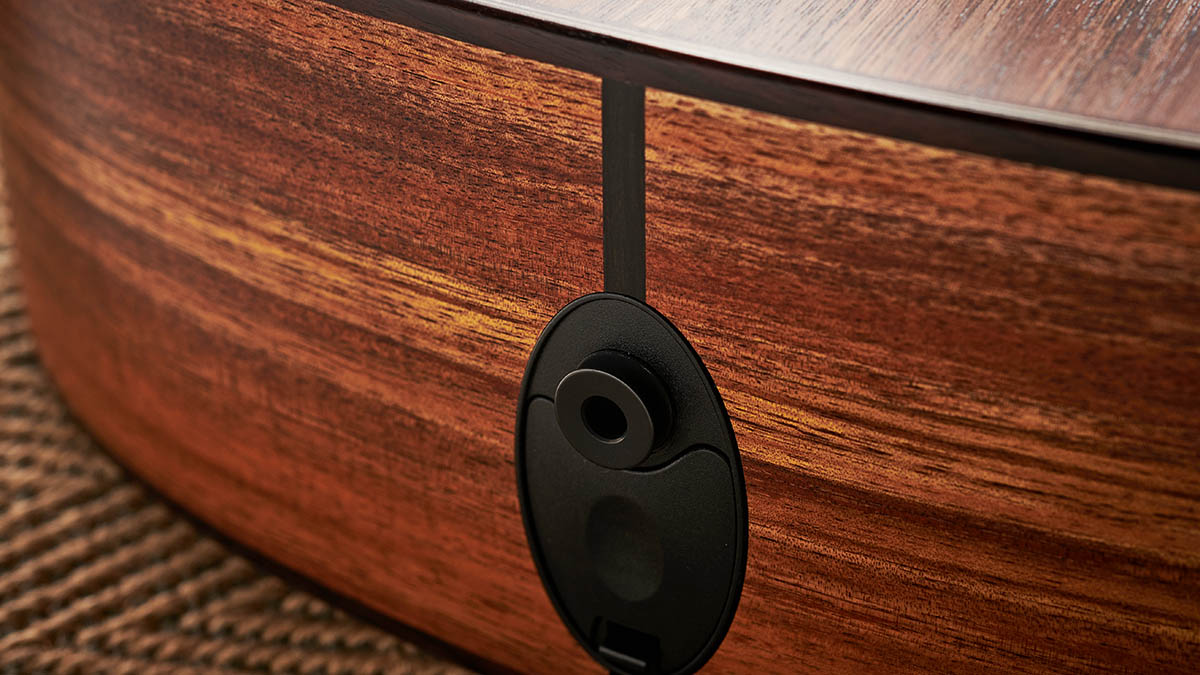
We have to hand it to Bob and Kurt, too, for taking a back seat in the business and letting Andy get on with the task of taking Taylor on the next leg of its journey – albeit under their watchful eye!
The move towards this beautiful and sustainable timber, too, must be applauded. That it makes for stunning-looking and sounding instruments, all tied together with Taylor’s unsurpassed build, is not only a joy to behold but to play and hear, too. These guitars aren’t exactly cheap, but we think they’ll gain a big following.
Specs
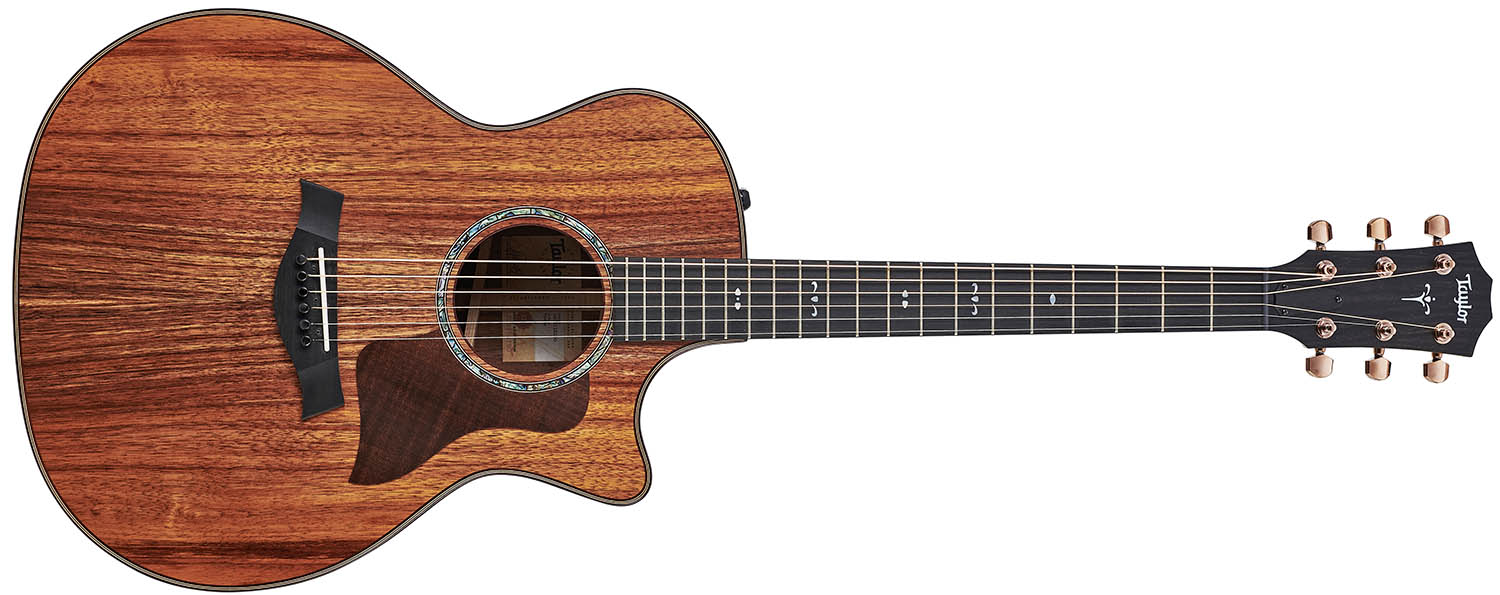
- PRICE: $3,499 / £3,799 (inc case)
- ORIGIN: USA
- TYPE: Single-cutaway, electro-acoustic
- BACK AND SIDES: Solid Hawaiian koa
- TOP: Solid Hawaiian koa
- NECK: Mahogany, with soft V profile
- SCALE LENGTH: 648mm (25.5”)
- NUT/WIDTH: Bone/44mm
- FINGERBOARD: West African ebony
- FRETS: 20, fine
- HARDWARE: Taylor brushed-bronze enclosed tuners, strap button and endpin jack, flip-open battery compartment situated in endpin plate
- STRING SPACING, BRIDGE: 56mm
- ELECTRICS: Taylor Expression System 2 with professional audio grade preamp, body-mounted volume, treble and bass controls
- WEIGHT (kg/lb): 2.1/4.6
- OPTIONS: No
- RANGE OPTIONS: Taylor 722ce Koa (£3,799) is the slightly smaller Grand Concert version carrying similar specs to the 724ce
- LEFT-HANDERS: Yes
- FINISH: Very thin skin, clear matt
- CONTACT: Taylor Guitars
In the late '70s and early '80s Neville worked for Selmer/Norlin as one of Gibson's UK guitar repairers, before joining CBS/Fender in the same role. He then moved to the fledgling Guitarist magazine as staff writer, rising to editor in 1986. He remained editor for 14 years before launching and editing Guitar Techniques magazine. Although now semi-retired he still works for both magazines. Neville has been a member of Marty Wilde's 'Wildcats' since 1983, and recorded his own album, The Blues Headlines, in 2019.
The heaviest acoustic guitar ever made? Two budding builders craft an acoustic entirely from concrete because they “thought the idea was really funny”
“For years, the only 12-string acoustics I got my hands on, the necks always pulled off after a bit. I earned a lot of money replacing them!” Why one of the UK’s most prolific luthiers is a bolt-on acoustic die-hard
